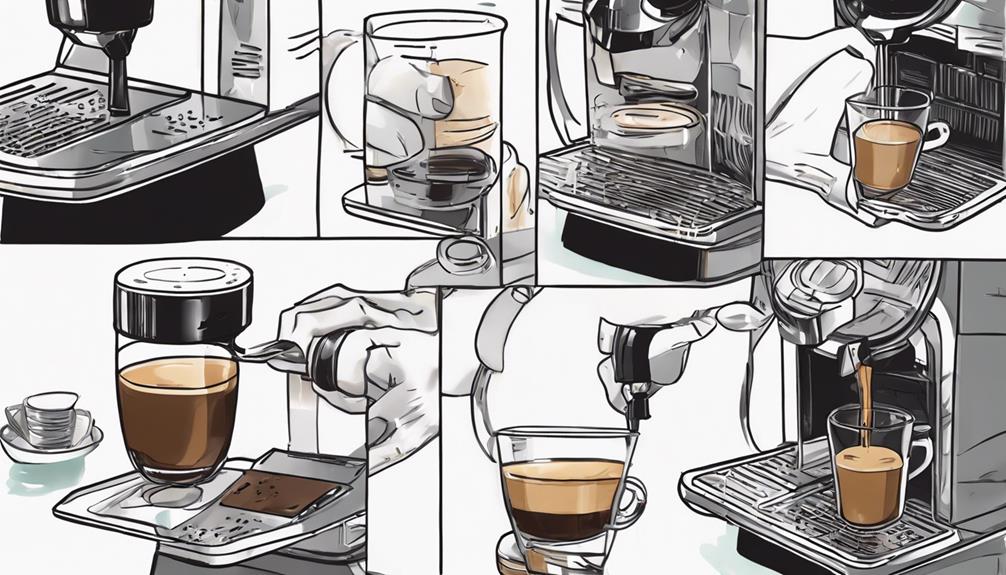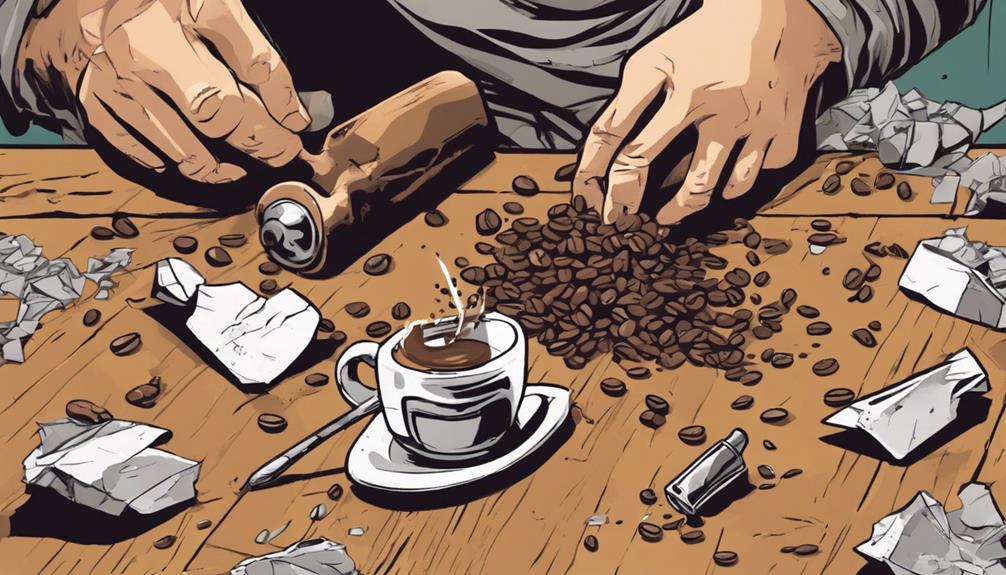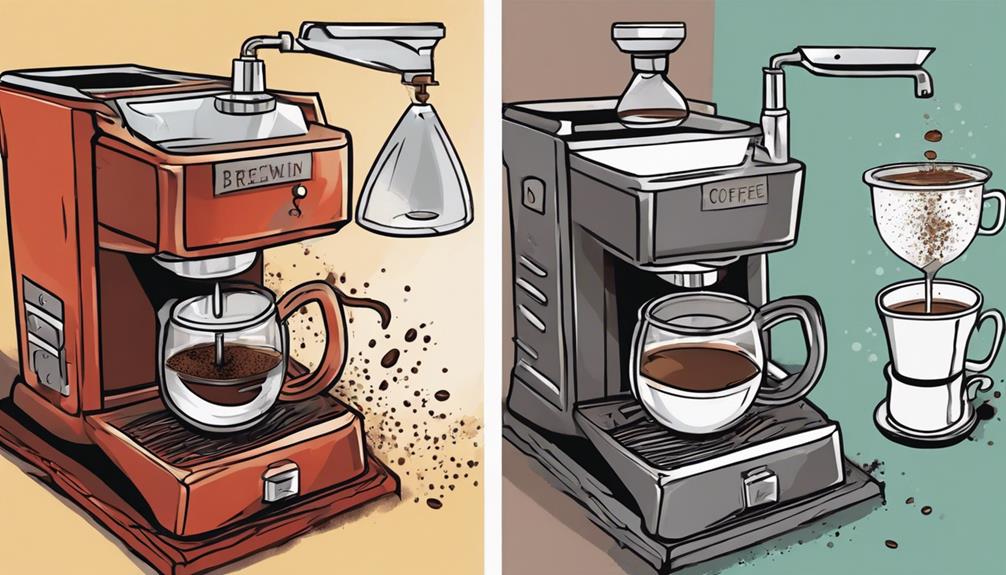Put together your Nespresso machine by filling the water tank to the maximum level, preheating it, and inserting an espresso capsule. Adjust cup height, select size, and brew for less than a minute. Include milk for a creamy flavor, froth for cappuccinos, or try out different variations. Insert the pod with the flat side facing downward, customize coffee strength, and store your preferred settings. For more detailed instructions and problem-solving, refer to the provided guidelines to improve your coffee brewing abilities.
Key Takeaways
- Fill water reservoir to designated level at back or side.
- Insert Nespresso capsule correctly for optimal brewing.
- Adjust cup tray for different cup sizes.
- Preheat machine before brewing for best results.
- Experiment with milk, sugar, and pod varieties for customization.
Water Tank Filling and Preheating
Fill the water reservoir of your Nespresso machine with fresh, cold water up to the designated maximum level indicated inside. The water reservoir is typically located at the back or side of the unit for easy access.
Fill the reservoir adequately to avoid interruptions during the brewing process. Once the water reservoir is filled, it's time to preheat your Nespresso machine. Turn on the machine and allow it to warm up for a few minutes before brewing your coffee.
Some Nespresso models offer adjustable temperature settings for the water, allowing you to customize your coffee experience to your liking. Remember to regularly check the water reservoir to ensure it remains filled with water.
Preheating the machine before brewing not only guarantees ideal brewing temperature but also enhances the flavor and aroma of your Nespresso coffee. Get ready to enjoy a delicious cup of coffee brewed to perfection.
Espresso Capsule Insertion and Brewing
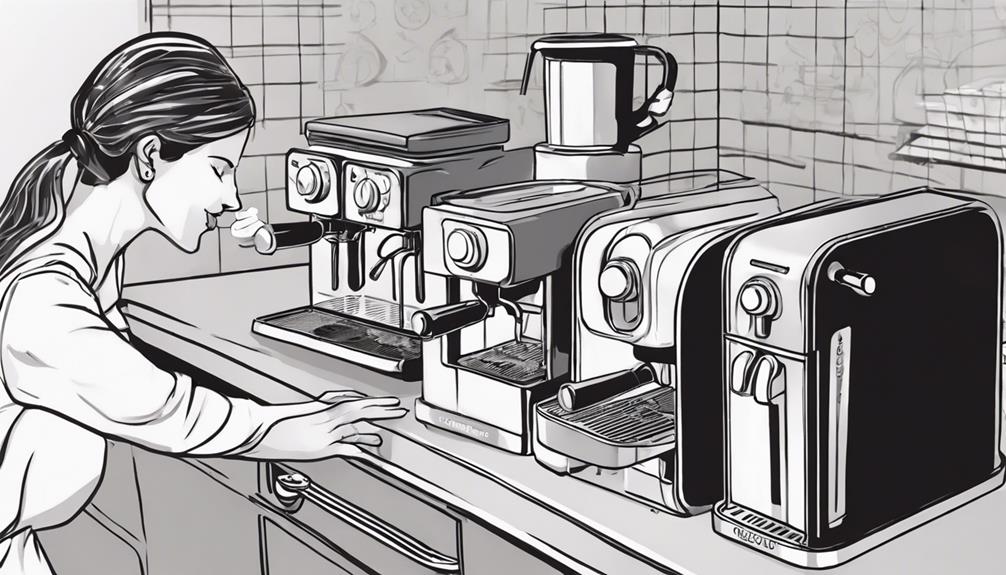
Once the water reservoir is filled and preheated, you can proceed to inserting the specific espresso capsules into your Nespresso machine for brewing.
Nespresso machines are designed to work with their proprietary capsules to guarantee the best coffee quality. Follow the manufacturer's instructions to properly insert the capsule into the machine.
When you start the brewing process, the machine pierces the capsule and hot water is forced through it to extract the rich coffee flavors. The brewing time with Nespresso machines is impressively short, usually taking less than a minute to deliver a delicious cup of coffee.
Nespresso machines also offer the flexibility of different brewing options and cup sizes, allowing you to personalize your coffee experience based on your preferences. Experiment with the various options available to find the perfect balance and strength of coffee that suits your taste buds.
Enjoy the convenience and quality of Nespresso coffee at the touch of a button.
Cup Selection and Brewing Steps
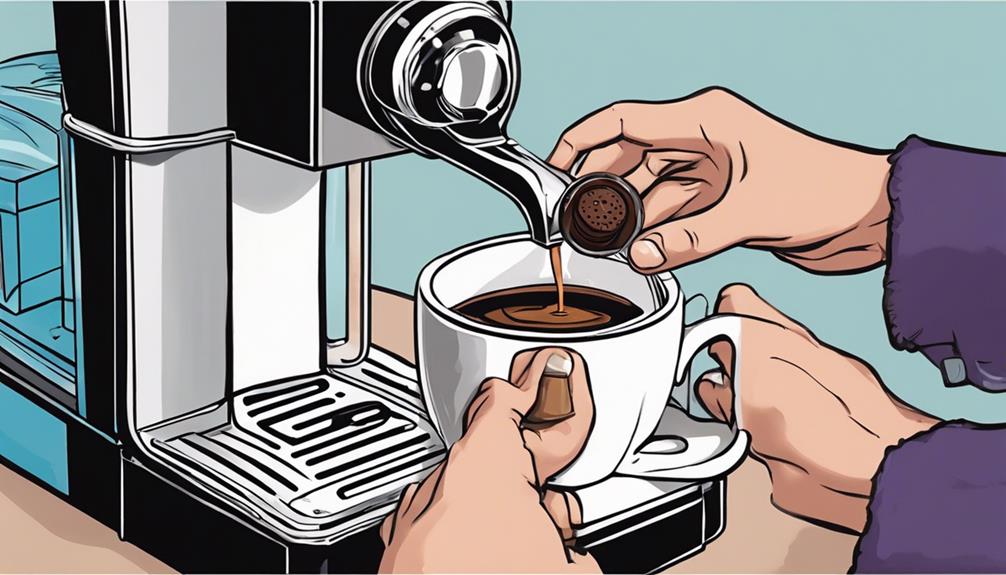
Adjust the cup tray height on your Nespresso machine to guarantee proper fit for different cup sizes and prevent any potential splashing or spills during the brewing process.
Making coffee with your Nespresso machine involves selecting a cup size that suits your preference, whether it's a quick espresso shot or a longer lungo pour.
Follow the brewing steps displayed on your machine or outlined in the manual to assure that the extraction time and temperature align with the chosen capsule for the best results.
Each Nespresso model may offer specific cup sizes and brewing options, so take the time to familiarize yourself with your particular machine to optimize your coffee experience.
Experiment with various cup types and sizes to find the perfect match for your Nespresso coffee, as the right cup can enhance both the taste and presentation of your brew.
Milk or Sugar Addition
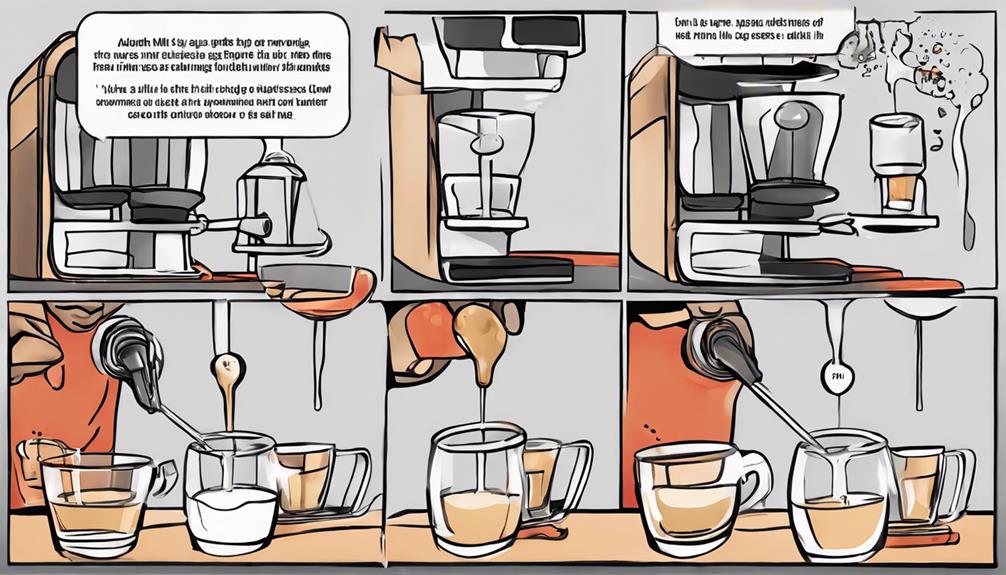
Consider enhancing your Nespresso coffee experience by incorporating milk to create a creamy texture and mellow out the espresso's intensity. Nespresso machines offer the option to froth milk separately, perfect for cappuccinos and lattes.
Experiment with different types of milk like almond or oat for unique flavors and dietary preferences. Additionally, adding sugar can enhance the coffee's flavor, but it's advisable to start with a small amount and adjust to taste gradually.
For a personalized touch, consider using flavored syrups or spices like cinnamon to elevate your Nespresso coffee experience further. By customizing your coffee with milk or sugar, you can tailor your Nespresso drink to suit your preferences, making each cup a delightful and personalized treat.
Pod Orientation and Coffee Adjustment
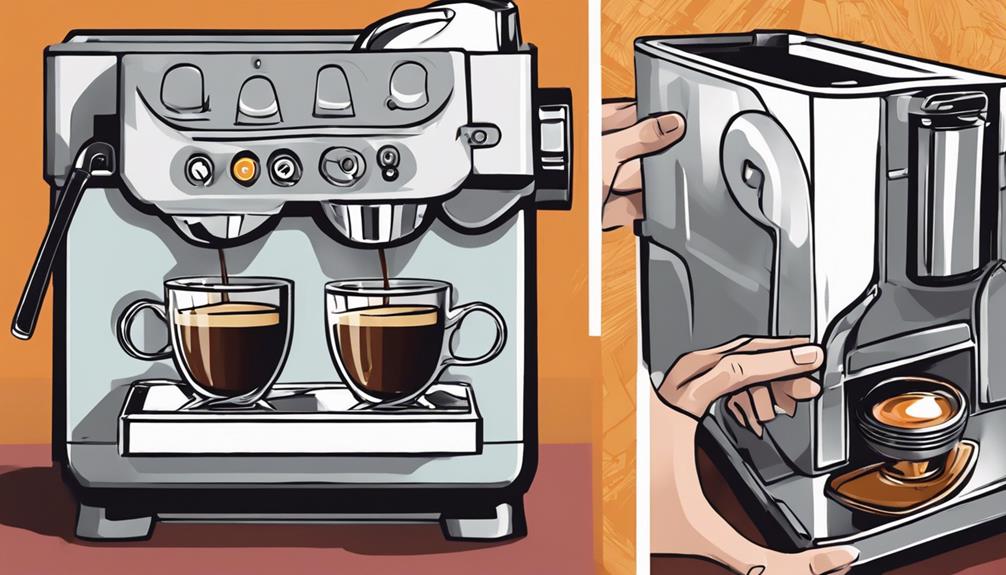
Guarantee proper brewing by inserting the Nespresso pod with the flat side facing down and the rounded side facing up in your Nespresso coffee maker. This secures that the water flows evenly through the coffee grounds, extracting the best flavors from the pod.
For a customized coffee experience, adjust the coffee size settings on your machine. This feature allows you to control the strength and volume of your espresso or lungo according to your preference. Don't forget to utilize the programming options available on your coffee maker to save your favorite coffee size settings for future use, ensuring a consistent brew every time.
To explore different flavor profiles, experiment with various pod varieties and adjust the coffee strength to suit your taste buds. Remember to consult the user manual provided with your Nespresso machine for specific instructions on pod orientation and coffee adjustment tailored to your model. Enjoy the freedom to tailor your coffee just the way you like it with these simple adjustments.
Machine Troubleshooting and Customer Service

For efficient technical support and troubleshooting assistance with your Nespresso coffee machine, reach out to Nespresso customer service. When contacting customer service, make sure to provide essential details such as your machine's serial number, model, and any error messages you may have encountered.
Nespresso offers various resources like online guides, manuals, and FAQ sections to help users address common issues independently.
Customer service representatives are available to assist you over the phone and can guide you through troubleshooting steps to resolve issues promptly. If your Nespresso machine experiences a malfunction that can't be fixed remotely, Nespresso may offer repair or replacement options based on the warranty coverage of your device.
Don't hesitate to reach out to Nespresso's customer service for any technical concerns or questions you may have regarding your coffee machine.
Frequently Asked Questions
How to Put Nespresso Together?
To put Nespresso together, guarantee cleanliness. Follow manual instructions for water tank, drip tray, and capsule container assembly. Insert the capsule correctly. Securely connect the power cord. After assembly, run a cleaning cycle for peak performance and taste.
How to Assemble a Nespresso Vertuo?
Want to assemble a Nespresso Vertuo effortlessly? Attach the water tank, insert the capsule, and close the lever. The machine's smart technology recognizes your choice and adjusts brewing for a perfect cup. Enjoy with ease!
How to Set up a Nespresso Coffee Machine?
To set up a Nespresso coffee machine, unbox and place it on a stable surface. Insert the water tank and secure it. Open the top, add a Nespresso capsule, plug in, and follow the manual for assembly.
How to Assemble Nespresso Drip Tray Pixie?
Assembling the Nespresso Pixie drip tray is a breeze. Just slide it in for a tidy countertop. Remember, a clean drip tray keeps your machine in excellent condition. Regular cleaning guarantees no residue or mold buildup.
Conclusion
Just like a well-oiled machine, assembling your Nespresso coffee machine is as easy as brewing a perfect cup of coffee.
With each step, you reveal the potential for a delicious caffeine experience that will awaken your senses.
So embrace the process with confidence and let your Nespresso machine be your trusty sidekick on your coffee journey.
Cheers to ease, convenience, and of course, great coffee!
